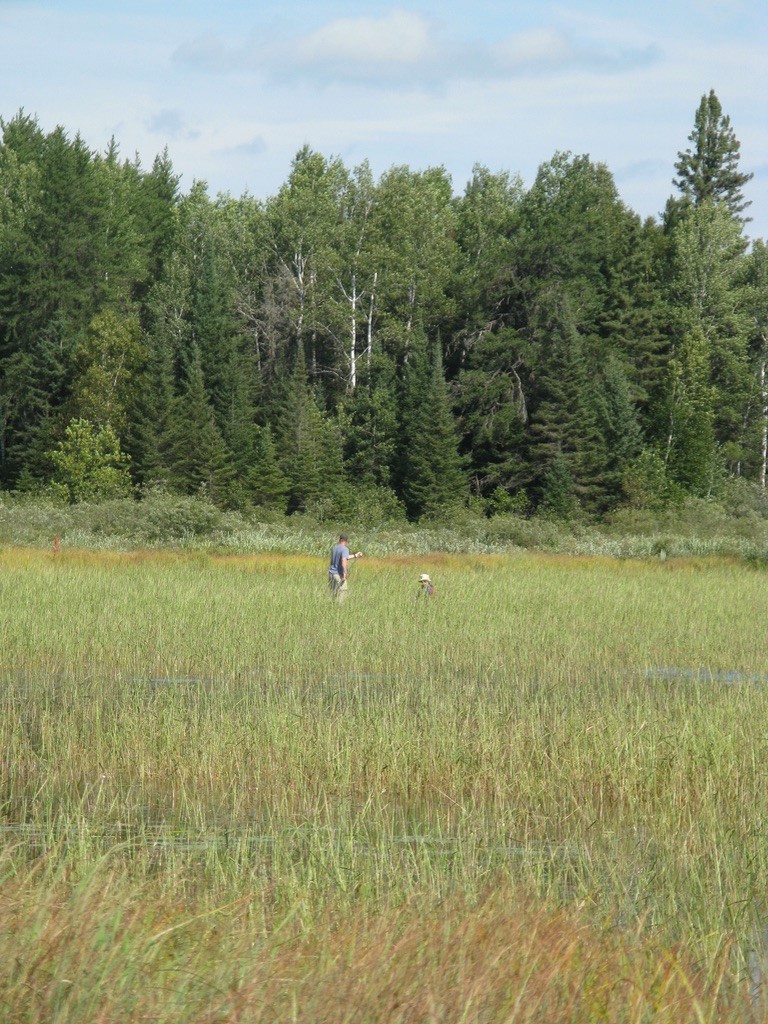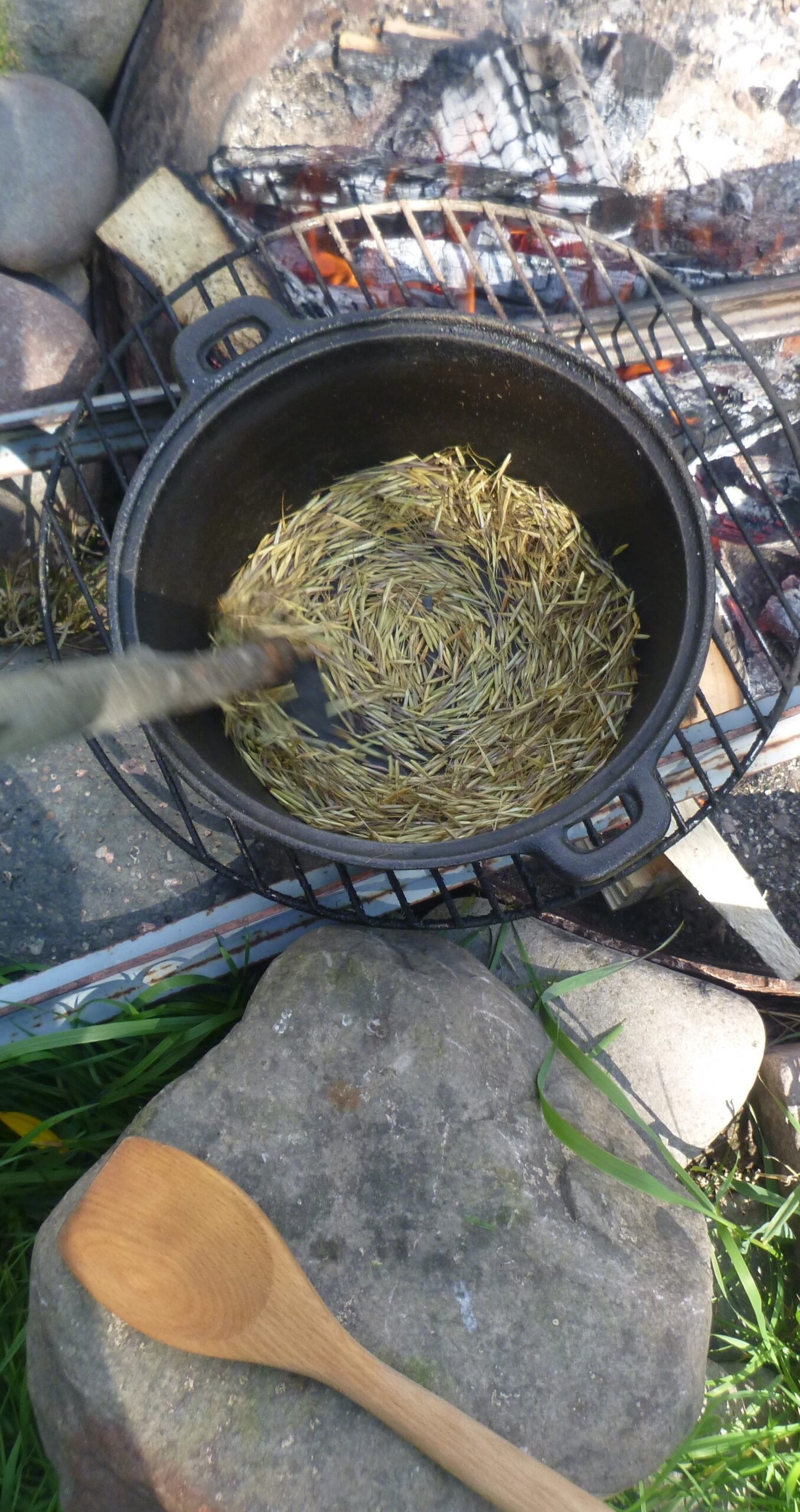
“Nibi Chronicles,” a monthly Great Lakes Now feature, is written by Staci Lola Drouillard. A Grand Portage Ojibwe direct descendant, she lives in Grand Marais on Minnesota’s North Shore of Lake Superior. Her nonfiction books “Walking the Old Road: A People’s History of Chippewa City and the Grand Marais Anishinaabe” and “Seven Aunts” were published 2019 and 2022, and the children’s story “A Family Tree” in 2024. “Nibi” is a word for water in Ojibwemowin, and these features explore the intersection of Indigenous history and culture in the modern-day Great Lakes region.
Dr. Emily Onello is a family medicine doctor in Duluth, Minnesota who is working to answer the question: can the addition of lake-harvested wild rice into our diets reduce the risk of colon cancer?
Onello along with her University of Minnesota (UMD) colleague, Dan Gallaher, and their team of researchers released some initial results in 2020. Those results confirmed that, “even when consuming a higher fat diet, the addition of wild rice promoted a more favorable and diverse profile of gut microorganisms.”
Onello’s team used an “animal model” approach to research, which involved feeding rats three different, controlled diets over time:
- A low-fat diet;
- A high fat “Western” diet;
- A high fat diet plus manoomin.
The rats fed a high-fat diet with the addition of wild rice showed reduced rates of the biochemical marker for colon cancer. In other words, adding manoomin into your diet, even without making any other changes may provide protection from developing colon cancer.
“In 2017, when I started asking questions about ways to study the health benefits of consuming wild rice, I was fortunate to be welcomed into a world of established partnerships between wild rice knowledge keepers, resource managers, and university researchers,” said Onello, specifically highlighting her collaboration with tribes across Ojibwe country. “These partners provided a wonderful model for me about how to collaborate on projects and research involving wild rice.”
The work is funded by the Whiteside Institute for Clinical Research, based in Duluth as a partnership between St. Luke’s/Aspirus and UMD. Key collaborators include Nancy Schuldt, the Water Projects Coordinator at the Fond du Lac Reservation and her colleague, Thomas Howes.
Onello also credits Tribal Elder and Museum Director, Jeff Savage, who was very generous in teaching her, along with Darren Vogt, at the 1854 Treaty Authority. According to Onello, he patiently corrected many of her misconceptions and opened her eyes to the complexity of the wild rice ecosystem, and his remarkable longitudinal studies of natural wild rice habitats.
One of Onello’s mentors is Indigenous researcher, Dr. Melissa Walls who introduced her to the concept and the importance of Community Based Participatory Research, (CBPR), when working with tribal communities.
“While my research is not yet scaled up to full CBPR, I do try to conduct community-informed research, which means listening to and communicating with tribal members and representatives as much as possible,” said Onello.
An Indigenous Super Food
On a biochemical level, wild rice (manoomin or psíŋ) plays an unparallel role in the overall health of Great Lakes tribal communities. I asked Dr. Onello about the nutritional value of this Indigenous super food and she explained that,
“Wild rice is considered a whole grain, which is a ground, cracked or flaked fruit of the grain whose principal components (the starchy endosperm, the germ, and bran) are present in the same relative proportions as they exist in the intact grain,” said Onello.

Parching manoomin. Photo by Staci Drouillard, 2020 Staci
According to Onello, these whole grains offer greater health benefits than consuming refined grains (white bread, white rice), which are often stripped of important nutrients in the refining process.
She offered more details about the difference between manoomin and other kinds of rice:
“Wild rice’s nutritional composition is comparable or even superior to other important food sources, supporting wild rice’s valuable role as a dietary staple,” said Onello. “For example, wild rice contains about double the amount of protein than long grain white or long grain brown rice. It also has 3-5 times the amount of fiber.”
And even though the caloric content is similar for wild, white and brown rice, according to Onello, wild rice is an excellent source of the B vitamins — thiamin (B1), riboflavin (B2) and niacin (B3). She said levels of these vitamins in wild rice well exceed those found in white or brown rice.
And there’s more — wild rice is also gluten-free. Gluten is a protein that can be problematic for some people because, it is a protein fraction found in wheat, barley and rye that can cause inflammation in susceptible individuals. As Onello points out, gluten-free alternatives can often be hard to find or quite expensive. Wild rice is a local, affordable and nutritious food option for individuals with gluten susceptibility.
The 2020 research summary states another important distinction between wild rice and other foods. Manoomin has been found to have higher concentrations of γ-oryzanol and ferulic acid, both exhibiting antioxidant and chemo-preventive properties, than other types of rice.
Manoomin is Medicine
In a comprehensive study on the effects of wild rice conducted by the Minnesota Chippewa Tribe in 2018, manoomin is defined as being central to Anishinaabe identity and preservation of culture and critical to food security. Manoomin is also defined as “medicine” and has been a part of our seasonal foodways and ceremonies since arriving at the place where “food grows out of the water.” So, I asked Dr. Onello about the medicinal implications for humans and potential long-term health benefits — something that centers her research.

Dr. Emily Onello, 2016. Courtesy of Emily Onello
“This question really excites me and fuels my work,” said Onello. “I wish that I had a robust answer for you, but Western science has not caught up to traditional Indigenous Knowledge on this subject. Most researchers suspect that consumption of wild rice likely contributes to a longer lifespan, lower cancer rates, along with many other health benefits. But to my knowledge, there have yet to be any published research reports of any human dietary studies (or ‘feeding trials’).”
She continued: “My work so far has involved a small animal study to look at the effect of consuming wild rice on colon cancer risk, disturbance of liver fat and metabolism, and the bacterial populations in the gut (the ‘microbiome’). Other researchers have also used animal models to reveal cardiovascular and anti-inflammatory benefits of consuming wild rice. But again, nothing is available to report in humans. This is an important area wide open for exploration.”
Dr. Onello says that her team is eager to repeat this work on a larger scale and explore how the research can be translated to the human level.
The Human-Manoomin Partnership
Manoomin currently appears as a star ingredient on restaurant menus, in cookbooks and anywhere there is a buzz about the Indigenous Foodways movement. I asked Onello about the current trend, and if she felt that increased focus on manoomin could pose a danger to the resource, or disrupt community access to this ancient and primary food source.
“I have asked myself this question many times, as the last thing that I want to do is threaten wild rice by highlighting its value,” said Onello. “I will answer in the way that I have answered it for myself,” she continued, crediting one of her Indigenous research partner’s teachings about reciprocity between wild rice and humans.
According to Onello, if we take care of the rice, it will take care of us. If we neglect it or stop valuing it, the rice will not thrive. By harvesting and caring for the natural wild rice stands, we maintain our enduring partnership with rice, she said. Part of the human-manoomin partnership is honoring the inherent value of manoomin and its natural habitat, which is why she offered this warning:
“But this partnership still relies on mutual respect, and I do worry about commercialization and greed,” she said. “It is important for non-Indigenous ricers to learn the correct way to harvest to preserve the rice beds. It is also important to speak up for environmental policies to protect wild rice and its wetland habitat.”
Following her commitment to community-informed research, Dr. Emily Onello welcomes ideas, questions and comments. She can be reached by email at econello@d.umn.edu.
Catch more news at Great Lakes Now:
Nibi Chronicles: The Gift of Manoomin
Nibi Chronicles: A conversation about Ojibwe history in Fur Trade Nation
Featured image: Members of Dr. Onello’s family ricing, 2016. Courtesy of Emily Onello



![Map showing locations of key features, or measures, of the tentatively selected plan at Brandon Road Lock and Dam. [Source: USACE]](https://d2j02ha532z66v.cloudfront.net/wp-content/uploads/2017/08/asiancarp-gl-600x360.jpg)
